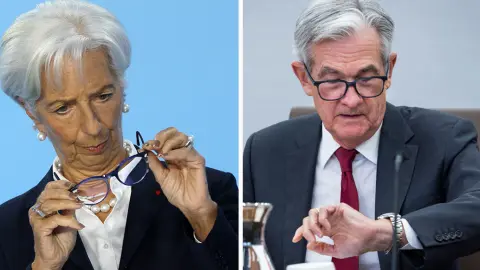The US is hiking into a recession
The Federal Reserve is focused on defeating inflation, whatever the economic cost. Nonetheless, after four consecutive 75bp rate hikes the pace is set to slow. We look for Fed funds to peak at 5%, but with nascent signs that inflation will fall sharply next year and the likelihood that recession will bite hard, the chances of a policy reversal in 2023 are high
Recession risks rise as the Fed stays focused on inflation
The Federal Reserve has now raised interest rates by 375bp this year, the fastest pace of policy tightening since Paul Volker led the Fed in the late 1970s/early 80s. The danger is that the harder and faster a central bank moves into restrictive territory – to get a grip on inflation – the less control over the outcome and the greater chance of a recession. That is now our big fear.
The residential real estate market is where the pain is currently most acute with surging mortgage rates prompting a plunge in mortgage applications and falling housing transactions. Home prices have fallen for two months in a row, but we feel this is just the start. To return house price-to-income ratios back to 30-year averages it would require prices to fall more than 20%. This would be dire news for residential investment and the construction sector more broadly while retail activity that correlates with home sales – household furniture, furnishings and home appliances – will also be heavily hit.
House price-to-income ratios 1999-2022

The corporate sector is also now facing some strains as demand slows, yet cost pressures remain intense. This deteriorating profit outlook is forcing boards to dial back their expansion plans with falling capital goods orders pointing to declining investment, while the trending lower in the number of job openings signals increased caution. A cooling jobs market comes at a time when household spending power is squeezed by high inflation with confidence under additional pressure from broad asset price falls.
Fed set to step down to 50bp from December
Unfortunately, there will be no let-up in interest rate hikes until the Fed is confident inflation is coming under control. Currently, both the core CPI (ex-food and energy) and personal consumer expenditure deflator are reporting monthly price rises of 0.5% or 0.6%, but to get inflation to average 2% over time we need numbers closer to 0.2% month-on-month. In the very near term, we are not hopeful that momentum will slow, but it does appear that the Fed, like other central banks, is looking to moderate the pace of future hikes as recession fears spread.
We continue to expect a 50bp rate hike in December, but given the stickiness in core inflation we now look at a final 50bp hike in February, which would take the Fed funds target range up to 4.75-5%. We don’t think the Fed will keep hiking into the second quarter though. Despite the near-term stickiness, there are encouraging signs that suggest inflation could slow quite quickly through the first half of next year.
Inflation is set to slow in 2023
Normally house price moves lead to changes in the housing CPI components by a year, but there is evidence to suggest actual rents are already falling, as reported by rent.com and realtor.com, amongst others. If so, the heavy 32% weighting of housing within inflation can contribute to a steep CPI slowdown more quickly than would typically be the case. Furthermore, the Manheim used car data points to used vehicles (4% CPI weight) falling 15% over the next couple of months, which can make a big dent in annual inflation rates.
NFIB survey suggests fewer companies are looking to raise prices, meaning core inflation could plunge

The most interesting guide though is from the National Federation of Independent Businesses, whose price plans series, which shows the proportion of companies looking to raise their prices in the next few months, suggests that corporate pricing power is rapidly weakening. This is highly correlated with the Fed's favoured measure of inflation – the core PCE deflator (see chart above). A recession will only intensify competitiveness pressures as businesses fight for customers.
2023 rate cuts remain our call
We now forecast three quarters of negative GDP growth in 2023 as the deteriorating domestic backdrop is compounded by a weakening external environment and ongoing dollar strength. But we also believe inflation will fall to close to 2% by the end of next year. With the Republicans likely to gain control of Congress after next week’s mid-term elections, this will severely curtail President Joe Biden’s ability to offer any support from fiscal policy. This means the onus will be on the Fed to promote a return to growth. We feel that in the second half of 2023 it will be in a position to do so with rate cuts.
This publication has been prepared by ING solely for information purposes irrespective of a particular user's means, financial situation or investment objectives. The information does not constitute investment recommendation, and nor is it investment, legal or tax advice or an offer or solicitation to purchase or sell any financial instrument. Read more
Download
Download article
4 November 2022
ING’s November Monthly: The long wait for the pivot This bundle contains 14 Articles